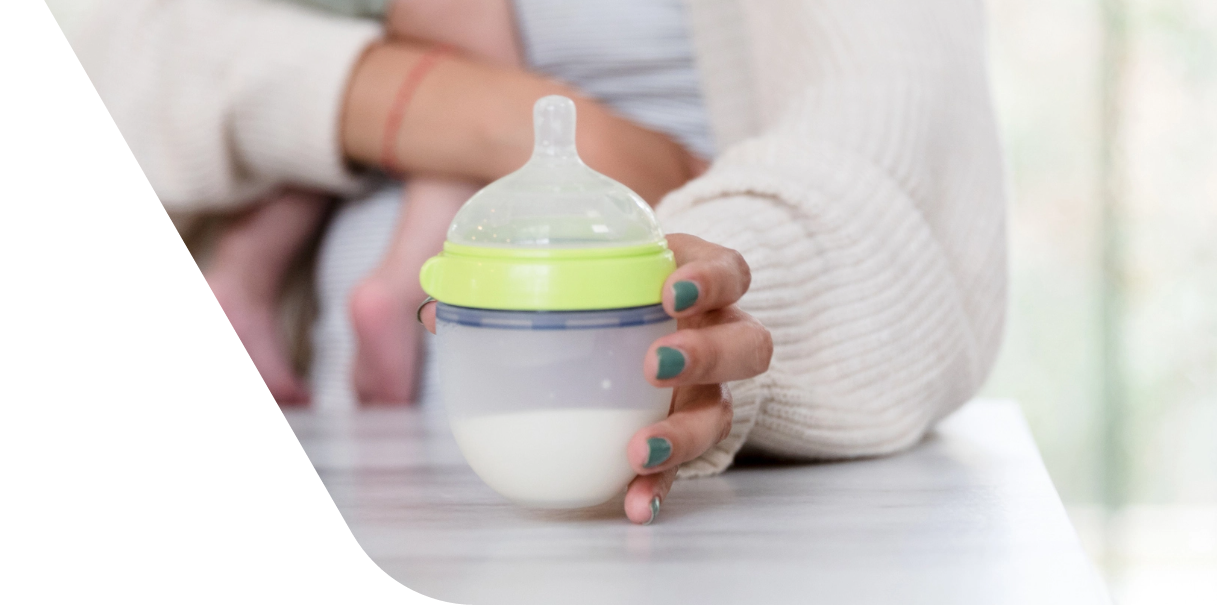That time has come; you need to start thinking about the logistics of daycare. It’s scary and overwhelming to think of leaving your little bundle of joy with a stranger. You have spent months working on finding your rhythm, learning what works best for your baby or toddler, and ensuring you do everything you can to keep them safe and healthy. All that hard work is handed over to someone else, which can be a sad and scary time.
It can also be a wonderful time. You can have your independence back; a little bit of space may be good for you and your baby! Regardless of how you feel about it, the best thing you can do is prepare yourself as best you can. We know the ins and outs of packing for daycare. Here are some tips we’ve learned over the years about how to best prepare and pack bottles for daycare.

Three tips to prepare for the transition


1. Communication
We can’t stress this enough, it’s critical to communicate well with your daycare. Find out the policies and work together to find a way to have your current routine work within their guidelines.
It is important to know whether your daycare will accept premade bottles or whether they should receive a sealed, cleaned container of formula powder. The majority prefer premade bottles, so formula mix-ups don’t happen. But it’s essential to understand their expectations. If they are preparing the bottle at the center, ensure your daycare provider is preparing and warming the bottles as advised on the label itself.
Remember that your childcare providers are very experienced, and although you have your preferred ways of feeding, keeping an open mind to suggestions can be beneficial. They may see things and have experiences you may not have had, so be open to their comments.
2. Buy what you need
Don’t get caught off-guard without enough bottles. Instead, buy a spare set to have one set for use at home. For example, have two sets for daycare: one so you can take the dirty bottles received from daycare and put them in the dishwasher for the night, while you use the other set to prepare for the next day.
If your daycare does not accept premade bottles, you will need to provide a sealed, clean container of powdered formula with the scoop that’s provided in the tub or can. Again, it’s important to communicate with them and understand the feeding policy.
If your baby is new or struggling to take a bottle, we recommend giving these bottle tips a read.


3. Label
Daycares often have the policy that no items will be accepted without proper labels. This isn’t just for convenience, but a matter of health and safety protocols to protect children.
The best labels are Mabel’s Labels. These labels will last through the dishwasher, sanitizer, and a lot of wear and tear. There are various options depending on what you need.
Here are a few good options:
Preparing and packing bottles
So, you have now spoken to the daycare and understood their policies. You’ve bought all the bottles you need, and your cute labels have arrived! It’s time to start thinking about the logistics of putting all the bottles together.
Preparing premade bottles for daycare
If your daycare requires that you bring pre-prepared bottles, or even partially prepared (which most do, to avoid mix-ups), there are a few simple steps to take the night before and the morning of.
- Wash your bottles.
- Prepare your Enfagrow A+® Powder: (Enfagrow A+® is for toddlers 1—3 years old and not intended for infants under one year of age). Enfagrow A+® provides the following directions:
- To make 1 (200 mL) serving, add three unpacked level scoops of powder to 175 mL of warm water.
- Mix until smooth. Refrigerate and use within 48 hours.
- Storage: After opening the can, store tightly covered at room temperature in a dry area. Store DRY scoop in the can.
- Ensure all your bottles are labeled with your child’s name and the date of preparation if required by your daycare, or even as your own reminder.
Packing bottle containers for daycare:

• The night before, wash and sanitize your bottles, teats, and lids.
• Once clean and dry, fully assemble the bottles, including screwing on the teat and covering with the lid. This will ensure that the inside of the bottle remains sanitary. And that the teat is not contaminated.
• Provide the powder inside its original container.
• Make sure to label the container with the child’s full name and date of opening.
Preparing and packing breastmilk for daycare:
Any pumping Mom knows the time and effort it takes to express liquid gold, so it is crucial to make sure none goes to waste. Part of this is safe storage, so it doesn’t get compromised. Also, ensure you’re always following these tips with your milk.
- The night before, wash and sanitize your bottles.
- Bring the milk in the sterilized bottle or a breast milk bag; one suitable for freezing and transporting milk. Make sure both the bottles and bags are clearly labeled with the child’s name.
- Frozen milk will need to be used within 24 hours of removing it from the freezer and should be kept in the fridge to thaw. So make sure to take it out of the freezer the night before, but no sooner.
- Fill your bottles and transport them in a cooler bag. Here are some excellent cooler bag options for carrying your bottles to daycare.
If you follow these tips and communicate well with your daycare provider, you should have a smooth transition from feeding at home to feeding at daycare. Being organized and prepared is the best way to ease anxiety. The transition is often harder on Moms than babies, so stay strong, mama, and enjoy a little independence again.








